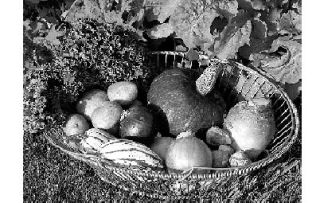It’s November and people are planning Thanksgiving dinner menus and inviting friends and family.
In these weeks before the big day, before trying to remember how to cook a turkey, there’s pleasure in thinking back on past Thanksgiving dinners and remembering who brought what side dishes to this ultimate potluck. The vegetables are familiar: Brussels sprouts, rutabaga, potatoes, onions, kale, winter squash. Their presentation changes with the guests who bring them.
Take Brussels sprouts, for example. For years, they were a vegetable I prepared, boiling them whole after cutting an X in each base so they’d cook evenly, watching them carefully and removing them while they were still green and flavorful, hoping they’d convert the skeptics.
Then sometime in the early ‘90s our friend Liz offered to fix them, cutting them in half, steaming them, mixing them with chestnuts, bacon and shallots and tossing all in a mustard cream sauce. This dish appealed to many, especially bacon lovers, and was the standard for as long as Liz could join us.
Back on my own to fix them, I disguised the mini-cabbage shaped sprouts by slicing them thinly and then sautéing the pile of slivered sprouts in browned butter. This preparation is now a favorite, though there is the variation of thicker slices tossed in olive oil and roasted on a cookie sheet in a hot oven. Either appeals to Brussels sprouts skeptics.
Other vegetables have also made the shift from boiling to roasting. Mashed rutabaga, a favorite at our neighbor’s Thanksgiving and one they shared when they joined us, has been replaced with rutabaga sliced into strips, tossed in olive oil and roasted like French fries. We all like it better this way, but I still remember the first time I prepared mashed rutabaga with my neighbor’s mom. She told me to grip the rutabaga with a dishtowel when I cut into it so it wouldn’t slide around. I still do that, for safety, but also for the pleasure of remembering Sallie.
Roasted vegetables may be healthier but butter and cream aren’t absent from the table. Making perfect mashed potatoes is really an art, one that my neighbor Laura has mastered. She claims it’s the butter, lots of it. Whatever, this is one dish no one wants changed.
And kale, such a health food when simply steamed or braised takes on new dimensions with the addition of heavy cream. I didn’t know this until my friend Karen described it as one of her family’s favorite Thanksgiving dishes and I tried it.
Onions, on the other hand, have become healthier. After years of traditional creamed onions, we now bring to the table thick onion slices that have been brushed with a little olive oil, roasted on cookie sheets until soft, then tossed with sherry vinegar and a pinch of cayenne.
Winter squash was always on the Thanksgiving table: sweet, nutty, bright orange fleshed Buttercup, baked like a potato and then, after removal of seeds, scooped into a bowl and served. Then one year our friend Chris brought “Sweet and Sour Squash with Mint,” quarter inch slices of winter squash fried until tender and slightly blistered in garlic flavored olive oil, sprinkled with chopped mint and marinated in a vinegar and sugar sauce. It hasn’t replaced Buttercup, but it has freed up some of the Buttercup for more squash pie.
Every Thanksgiving potluck has pies. In addition to many variations on apple, there are squash and pumpkin pies with squash the slight favorite with us because it is richer and sweeter. This year, though, my friend Molly gave me one of her Winter Luxury Pie pumpkins, a gorgeous orange pumpkin distinguished by delicate netting over the entire surface. Fans claim that it makes the “smoothest and most velvety pumpkin pie” ever. Who knows, it may replace squash pie as the favorite way to end the feast.
So before the stress of the holiday season kicks in, enjoy this time to savor memories of friends and food. Visit farm stands, buy local produce, be thankful for the farmers who grow these vegetables and the friends and family who prepare and share them. Then you can start worrying about the turkey.



